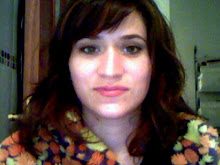The 2010 Global Peace Index by Vision of Humanity is out, which surveyed 149 countries according to 23 indicators: perceived criminality in society, security officers and police, number of homicides, jailed population, access to weapons, level of organized conflict, violent demonstrations, level of violent crime, political instability, respect for human rights, weapons imports, potential for terrorist acts, deaths from conflict (internal), military expenditure, armed services personnel, UN peacekeeping funding, number of heavy weapons, weapons exports, military capability/sophistication, number of displaced people, neighboring country relations, number of conflicts fought, deaths from conflicts (external).
Seems that these indicators might provide for a bit of conflation between countries that often serve and provide resources as external peacekeepers and those that suffer from internal conflict, however it is an important study and an excellent resource. Some of the findings include the following:
Top ten countries (respectively): New Zealand, Iceland, Japan, Austria, Norway, Ireland, Denmark, Luxemburg, Finland, Sweden,
Bottom ten countries (respectively): Iraq, Somalia, Afghanistan, Sudan, Pakistan, Israel (Palestine not mentioned), Russia, Georgia, Chad, DRC
Top five risers: Ethiopia, Mauritania, Hungary, Lebanon, Haiti (which I assume is pre-earthquake)
Top 5 fallers: Cyprus, Russia, Philippines, Georgia, and Syria
The most peaceful countries had characteristics of:
• Well functioning government
• Sound business environment
• Respectful of human rights and tolerance
• Good relations with neighbouring states
• High levels of freedom of information
• Acceptance of others
• High participation rates in primary and secondary
education
• Low levels of corruption
• Equitable sharing of resources.
Overall, the World has decreased in its peace (although the United States has increased from 2007 to 2010), with 62% of the countries surveyed worsening in their GPI score. The only regions to increase on average were the Middle East and North Africa and Sub-Saharan Africa.
From the GCC, Qatar ranks highest at 15/149, followed by Oman at 23rd place and Kuwait at 39th spot. It shouldn't come as a surprise that Saudi Arabia ranks lowest at 107th place, not far from its neighbor Yemen at 129th. The only GCC countries to increase in their GPI since 2007 were Kuwait and Qatar.
Ever-increasingly xenophobic and evermore in economic crisis Europe, particularly many of the "Alliance of Civilizations" countries did not fair so much better in its improvements. Spain dropped from 21st place in 2007 to 25th in 2010, Italy from 33rd to 40th, Switzerland from 14th to 18th, Greece from 44th to 62nd, Turkey from 92nd to 126th (putting it in red), Germany from 12th to 16, although the United Kingdom (49 to 34) and France both improved (34 to 32). The Balkan countries also saw an increase in GPI.
For the full view of the country map, click
here



